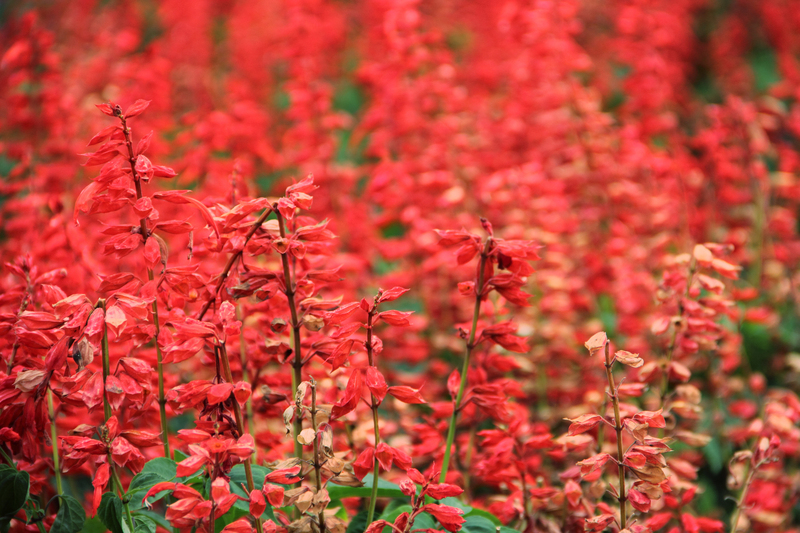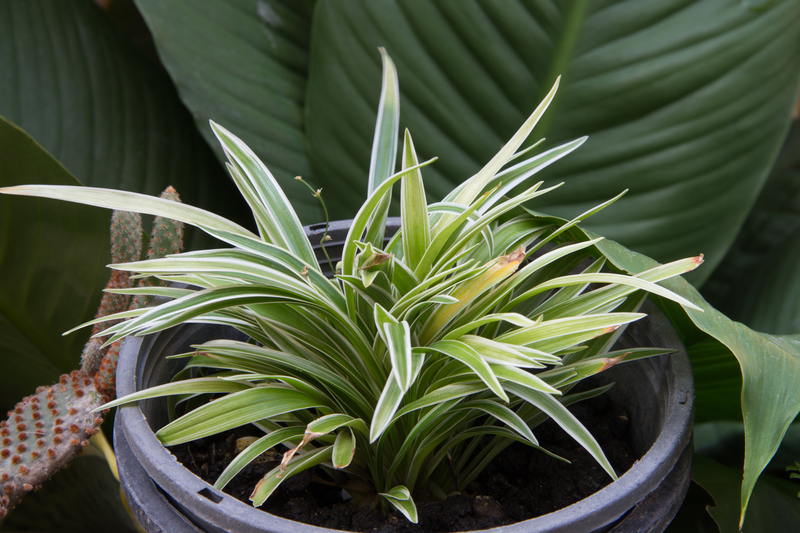Crafting a flourishing garden that dogs will love too
Posted on 03/06/2025
Crafting a Flourishing Garden That Dogs Will Love Too
Creating a lush, inviting garden is a dream for many homeowners and garden enthusiasts. For those who share their life with canine companions, the challenge is to balance garden beauty with a design that is both safe and delightful for dogs. In this comprehensive guide, we'll explore how to craft a flourishing garden that dogs will love too, combining landscaping wisdom with pet safety and enjoyment.
Why Design a Dog-Friendly Garden?
Dog lovers know: our four-legged friends are just as much a part of the family as any human member. Dogs spend significant time in the yard, so your garden should accommodate their needs--without sacrificing your plant passions or aesthetic desires. A dog-friendly garden minimizes hazards, prevents destructive behaviors, encourages exercise and interaction, and creates a harmonious zone for everyone.

Planning Your Garden With Dogs in Mind
Before breaking ground, effective planning is key to crafting a flourishing garden that dogs will love. Take note of your dog's habits and needs:
- Size and Breed: Active breeds may crave more room to run; smaller or older dogs may prefer shaded, restful spots.
- Likes and Dislikes: Some pups dig, others snooze in the sun, and some need cool hiding spots. Factor these in!
- Potential Hazards: Identify dangers, including toxic plants, sharp objects, or escape-prone fencing.
Consider the garden from your dog's perspective. Which areas does your dog like to explore? Where do they prefer to patrol or rest? By observing their existing behaviors, you can design a flourishing pet-friendly garden that both you and your canine will adore.
Choosing the Best Dog-Friendly Plants
The heart of every thriving garden is its plant life. But when you have a dog, you must select plants that are safe for dogs and tough enough to handle their playfulness.
Pet-Safe Plants
Avoid botanicals toxic to dogs. According to the ASPCA, some popular garden plants are harmful if ingested by dogs, including:
- Lilies
- Azaleas
- Daffodils
- Foxglove
- Tulips
- Sunflowers
- Marigolds
- Snapdragons
- Roses (be mindful of thorns)
- Ferns (Boston and Maidenhair varieties)
- Herbs: Basil, Rosemary, Thyme, and Sage
Tough, Dog-Proof Greenery
Because dogs love to romp and roll, consider sturdy ground covers and resilient shrubs that are less likely to be trampled. Try:
- Creeping Thyme
- Lamb's Ear
- Ornamental grasses (non-irritant varieties)
- Boxwood hedges
Tip: Train vines like honeysuckle or wisteria on trellises to add height and interest while keeping stems above ground-level chewing range.
Design Elements Dogs Will Love
To ensure your garden is just as enjoyable for your furry friends, incorporate thoughtful amenities for dogs:
Pathways Made for Paws
Dogs are natural path-makers. They tend to walk the same routes, creating "dog runs" along fences or favorite patrol patterns.
- Work with your dog's habits, not against them, by installing pathways in their chosen routes.
- Use soft, paw-friendly materials like bark mulch, fine gravel, or decomposed granite.
- Avoid sharp stones and heated concrete that can hurt delicate paw pads.
Shaded Resting Spots
Dogs love basking in the shade after play. Incorporate:
- Trees or tall shrubs to provide natural canopy
- Arbors or pergolas with climbing vines for dappled shade
- Pet-safe raised platforms or covered pet beds tucked into quiet corners
Adding a comfortable, cool resting area ensures your pup can enjoy the garden during warm months.
Water and Play Features
Hydration and stimulation are essential for a pet-friendly backyard:
- Install a dog-specific water fountain that refills automatically or add a shallow, stable water bowl in a consistent, shaded location.
- Shallow splash pools or doggy pools provide cooling fun, especially for water-loving breeds.
- Sand pits designated for digging can help contain your dog's instincts and minimize damage to garden beds.
Safe Fencing and Boundaries
Keeping your dog secure is vital. When crafting a flourishing garden dogs will enjoy, ensure your fencing is sturdy and escape-proof:
- Choose fencing at least 4 feet high for most breeds. Go higher for jumpers!
- Check for gaps or holes regularly--dogs are born diggers and clever escape artists.
- For added safety, use soft landscaping like dense shrubs or hedging along the fence line to discourage digging and jumping.
Chemicals, Mulches and Pet-Safe Practices
Caring for your garden means using products and materials that won't harm your pup. Pet safety in your garden oasis should always be a priority.
Avoid Toxic Chemicals
Chemicals used for fertilizing, pest control or weed management are often hazardous to dogs.
- Opt for organic fertilizers, compost, and natural pest deterrents like neem oil.
- Avoid cocoa mulch--its theobromine content is toxic to dogs.
- Steer clear of pesticides or herbicides unless certified pet-safe.
Always store garden chemicals out of reach, in secure sheds or containers.
Choosing the Right Mulch
Not all mulches are created equal in a dog-friendly landscape:
- Cedar mulch is generally non-toxic and repels insects naturally.
- Pine or hemlock bark chips are also good options, but avoid large, sharp pieces.
- Stone or gravel mulches can be used with supervision, but ensure they're too large to swallow.
Composting with Dogs
If you compost, make sure your dog can't access the pile. Rotting food and green waste can be irresistible but may cause digestive upset.
Creative Features for a Dog-Loving Garden
Uplift your flourishing garden with joy and stimulation for your canine friends using a few creative ideas:
Agility and Adventure Zones
Dogs love to explore! Boost their physical and mental activity by adding:
- Tunnels crafted from willow branches or plastic pipes
- Low, sturdy boulders or logs to climb
- Weaving poles made from flexible stakes or tall plants
"Sniff Gardens" and Sensory Paths
Canines experience the world with their nose. Plant a "sniff garden" of aromatic, non-toxic herbs and flowers like:
- Lavender
- Mint (confined to pots, as it spreads aggressively)
- Thyme
- Bee balm
Pet Waste Solution Areas
Designate one corner for bathroom breaks. Use gravel or sand for easy cleanup and train your dog to use this space. This keeps the rest of your garden clean and beautiful.
Maintaining a Dog-Friendly Flourishing Garden
A thriving pet-friendly backyard is a dynamic environment. To ensure ongoing harmony:
- Reinforce paths and high-traffic areas as needed
- Trim overgrown plants to prevent thorns or obstructed views
- Regularly inspect for hazards like sharp sticks or broken mulch
- Quickly clean up pet waste to prevent burns or staining on grass
With a little routine care, your garden can stay beautiful and dog-safe year-round.

Training Tips for Dogs in the Garden
Even the best design won't fully prevent doggy mischief! Basic training helps your pup respect boundaries and treat your plants with care:
- Teach "leave it," "off," and recall commands for safety and garden preservation
- Redirect digging to the designated sand pit
- Reward your dog for playing in "their" zones, relaxing in shadier areas, or using the bathroom spot
- Supervise puppies and new dogs until they learn the household rules
Consistent training ensures your flourishing garden remains a peaceful haven for you and your furry friend.
Conclusion: Your Flourishing, Dog-Loved Garden Awaits
Crafting a flourishing garden that dogs will love is entirely achievable with a little foresight and creativity. By focusing on:
- choosing the right pet-friendly plants,
- designing enjoyable spaces for dogs,
- opting for safe materials and practices,
- adding enrichment zones,
- and maintaining boundaries and training
Whether your goal is a vibrant flower garden, a cottage-style escape, or a modern landscape with safe, playful nooks, the most flourishing gardens are the ones enjoyed by all family members--human and canine alike.
Start planning today, and soon you'll be enjoying a lush, vibrant dog-friendly garden where tails wag and flowers bloom in harmony.



